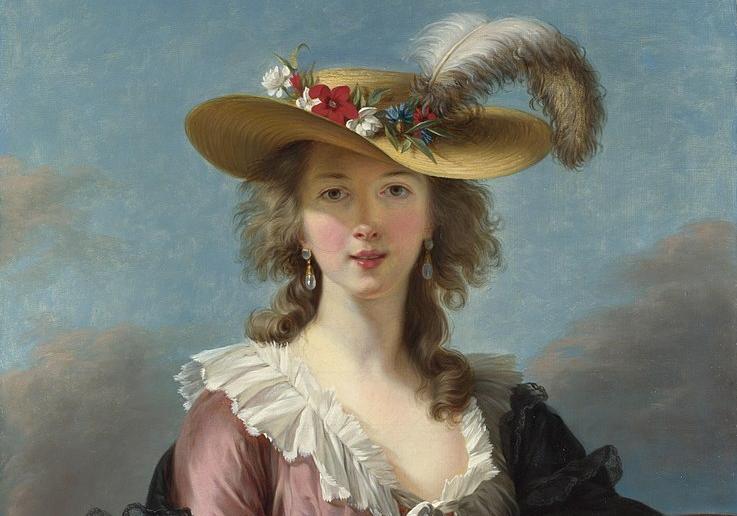
With the opening of the exhibition, Making Her Mark: A History of Women Artists in Europe: 1400-1800, at the Baltimore Museum of Art, featuring the work of groundbreaking women artists across four centuries, we take a look back at artist and art critic Jennifer Higgie's 2021 book The Mirror and the Palette: Rebellion, Revolution, and Resilience: 500 years of Women’s Self Portraits. The book features and takes a close look at women artists, some of whom are also in the exhibition such as Artemisia Gentileschi and Judith Leyster.
Throughout the twentieth and into the twenty-first centuries, female artists like Lois Maillou Jones, Frida Kahlo, Leonora Carrington, Amrita Sher-Gil, and Alice Neel have continued to paint themselves and the world as they see it despite the barriers that have only more recently begun to erode.
Thanks to the work of diligent researchers like Higgie, the hidden talents of an eye-opening number of extraordinary female artists who have been, for too long, trapped in the shadows of their male counterparts, are finally exposed.
Here are ten female artists who unflinchingly painted their inner and outer realities over the last five centuries.
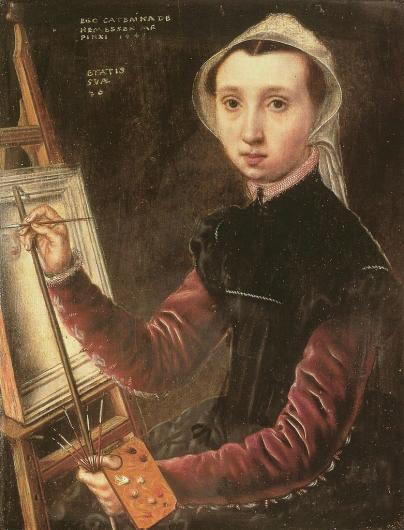
Catherina van Hemessen, Self-portrait, 1548.
Higgie states, “most people struggle to name even one female artist before the twentieth century. Yet women have always made art.” Catherina van Hemessen (1528-1588) was one of the earliest. At the time when the Netherlandish painter inscribed these defiant words: “I Caterina van Hemessen have painted myself/1548/Here aged 20” in Latin on the surface of her small (no larger than a book) self-portrait, women weren’t allowed to study anatomy and faced untold barriers to becoming professional artists.
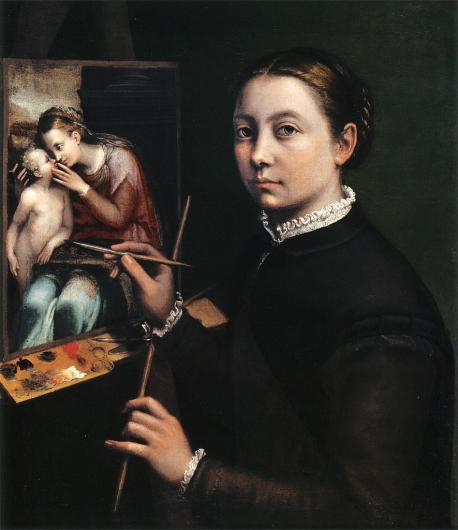
Sofonisba Anguissola, Self-portrait at the Easel Painting a Devotional Panel, 1556.
The trajectory of Sofonisba Anguissola (1531-1625), the most prolific self-portraitist between Dürer and Rembrandt, echoes that of van Hemessen. They both had supportive fathers, a factor that appears in the biographies of many other successful female artists. Although Anguissola was one of the most famous and admired European artists of either sex in the late sixteenth century, her accomplishments seemed to have quickly faded from public knowledge upon her death.
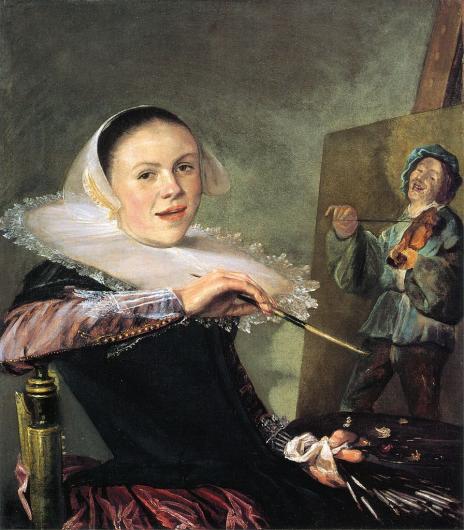
Judith Leyster, Self-portrait, 1630.
Judith Leyster (1609-1660) was the eighth of nine children. Her painting supported her family after her father was bankrupt. Although she was the only female member of the Haarlem Guild of St Luke in 1633, this membership allowed her to sell work on the open art market. Greatly influenced by the brushwork of Frans Hals, who was thirty years her senior, she also took the bold step of suing Hals when one of her apprentices left her workshop for his. In Self-portrait (1630), she turns her smiling youthful face towards us, as though she doesn’t mind the viewer’s interruption of her painting process.
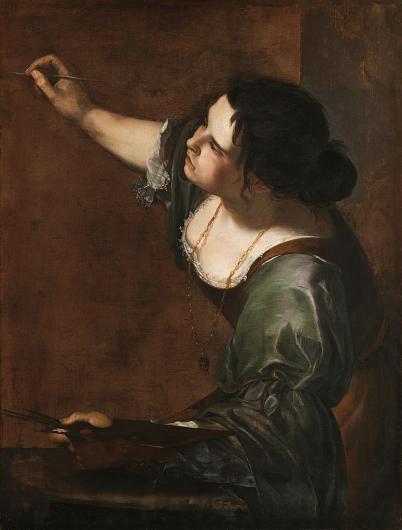
Artemisia Gentileschi, Self-portrait as the Allegory of Painting, 1638-39.
One of the greatest artists of the Baroque, Artemisia Gentileschi(1593-1656), is having a moment. Born a prodigy, her father (another supportive painter) taught her what he knew. In her first major work, Susanna and the Elders (1610), Gentileschi turned a sexual assault into allegory. Higgie tells us, “Her pictures blaze across the centuries: her fury, her brilliance, the sheer compelling power of the images she created has never dimmed.”
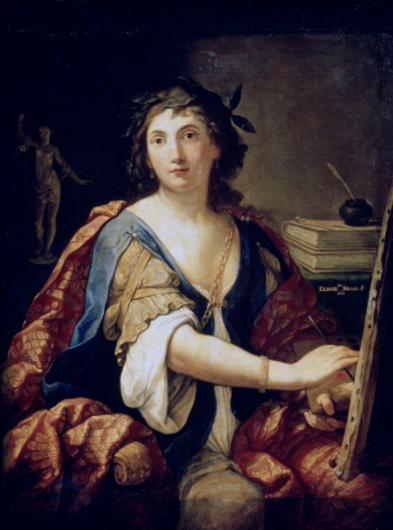
Elisabetta Sirani, Self-portrait as the Allegory of Painting, 1658.
Like many other artists of the Renaissance and Baroque, Elisabetta Sirani (1638-1665) died young. Perhaps driven by that knowledge of such a possibility, she painted Self-portrait as the Allegory of Painting, 1658 when she was only twenty. In it, the artist fashions herself as, “full of personality and talent, young and fizzing with life. It’s a defiant statement at a time when to be a woman artist was to be an object of amazement.”
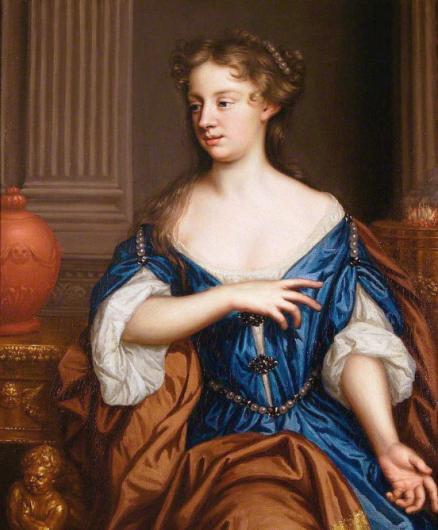
Mary Beale, Self-portrait, c. 1675.
Mary Beale (1633-1699) was one of the first women to become a professional artist in Britain and the first woman known to write about art. Her father’s interest in art opened doors for Mary and her sisters. She often painted her family, including her two sons and supportive husband who worked as her assistant. In her Self-portrait (c. 1675), she exudes confidence as the breadwinner of her family and demonstrates superb skills in painting luxurious fabrics and unblemished skin.
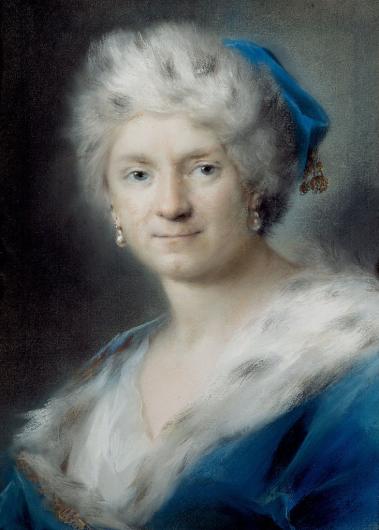
Rosalba Carriera, Self-portrait as Winter, 1730-31.
Women, in any century, had little to gain by presenting themselves as aging. Rosalba Carriera (1673-1757), considered successful by the standards of any era, “depicted herself not only as someone who has aged, but as the embodiment of the passing seasons…” What strands of hair are visible appear grey, but her expression is bold and direct in Self-portrait as Winter (1730-31), which the artist painted in her late fifties. She went on to live another productive twenty-five years.

Elisabeth Vigée Le Brun, Self-portrait in a Straw Hat, 1782.
The charming, smiling self-portraits of Elisabeth Vigée Le Brun (1755-1842) caused a furor in her own time. Born in Paris, her father was an artist who died when she was twelve. By the eighteenth century, women had made some progress socially and politically, but it was still illegal for females to work as an artist without guild or academy membership. Vigée Le Brun was a natural talent. Her sun-filled Self-portrait in a Straw Hat (1782). earned her entry into the Royal Academy and Marie-Antoinette became her powerful champion.
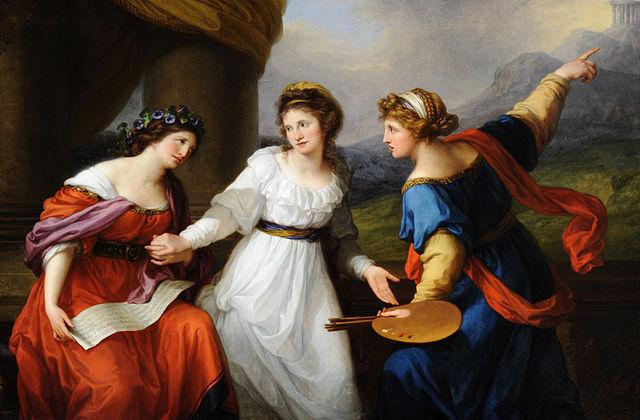
Angelica Kauffman, Self-portrait of the Artist Hesitating Between the Arts of Music and Painting, 1794.
Although Angelica Kauffman (1741-1807) was one of only two women among the thirty-six founding artist members of London’s Royal Academy, she does not appear in their group portrait. It was staged in the life studio with a nude male model and society still deemed women too fragile to confront naked male, flesh. By the age of eleven, Angelica’s prodigious abilities were already publicly acknowledged. She spoke four languages and was a gifted musician. Art and music compete for her attention in Self-portrait of the Artist Hesitating Between the Arts of Music and Painting (1794).
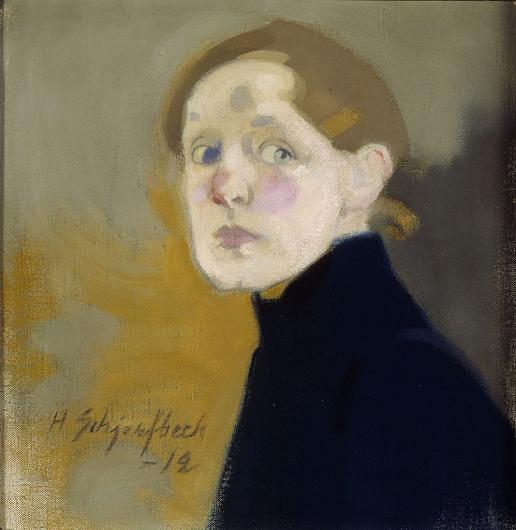
Helene Schjerfbeck, Self-portrait, 1912.
Finnish artist Helene Schjerfbeck (1862-1946) painted herself thirty-six times from youth to middle-age and finally, near death, at eighty-four. Like the great Mexican self-portraitist Frida Kahlo, Schjerfbeck experienced serious childhood injury and lived with pain for the rest of her life. Like Kaufmann, Schjerfbeck’s talent was recognized by age eleven. She was unlucky in love and had problems with anxiety that were clearly demonstrated in her Self-portrait (1912).
Cynthia Close
Cynthia Close holds a MFA from Boston University, was an instructor in drawing and painting, Dean of Admissions at The Art Institute of Boston, founder of ARTWORKS Consulting, and former executive director/president of Documentary Educational Resources, a film company. She was the inaugural art editor for the literary and art journal Mud Season Review. She now writes about art and culture for several publications.























